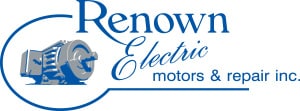Blog
In the majority of buildings constructed prior to 2000, elevators are operated by DC gearless motors. When problems arise, the first step is typically to replace the motor, but this can be a costly, complex procedure — and is usually unnecessary. Even after several decades of use, DC-powered elevator motors can still provide optimal service if the proper drive is selected and the motor is properly repaired or rebuilt.
Repairing or rebuilding not only provides significant cost savings over motor replacement, it also greatly reduces overall energy costs for the building. Below, we’ll delve into the various benefits of DC motor repair.
Longer Life Expectancy
When properly repaired or rebuilt, DC motors can last for 100 years or more. AC motors, on the other hand, usually only last around 15-20 years. Within one lifespan of a DC motor, an AC motor would have to be replaced anywhere from five to seven times — an extremely costly, time-consuming process.
Lower Upfront Costs
It can cost anywhere from $20,000-$85,000 to replace a DC motor with an AC motor; various factors affect the price, including DC breakdown and removal, the size of the compatible AC motor, hoisting requirements, the motor installation process, and requisite building work. Also, AC motor systems installed in 1999 prior to the release of updated code regulations may already need to be replaced.
A team of skilled refurbishers, however, can quickly and easily perform DC modernization for $3,000-$10,000, depending on the specific application. Variables such as elevator controls, part cleaning, refurbishment, replacement, and additional modernization technology installation are factored into the price.
Energy Savings
Unlike DC modernization, replacing a DC motor with an AC motor requires costly equipment, removal, producing, shipping, and installation expenditures.
Besides these obvious cost savings, DC refurbishment also results in significant energy savings; not only is the overall elevator ride improved, the installed regenerative drive also effectively captures energy and returns it to the grid. Modernized DC-powered elevators actually use less than half the amount of energy of standard AC-powered elevators — comparable to the energy levels used by AC permanent-magnet motors.
Choosing modernization over replacement may also qualify for Leadership in Energy & Environmental Design or Building Research Establishment Environmental Assessment Method credits as well as ENERGY STAR® points — important achievements in today’s changing landscape, as environmental concerns become increasingly important in the manufacturing world.
Learn More
To learn more about the benefits of DC motor modernization for elevators, check out our recent article published in Elevator World, “Modernizing DC Gearless Motors.”









Comments are closed